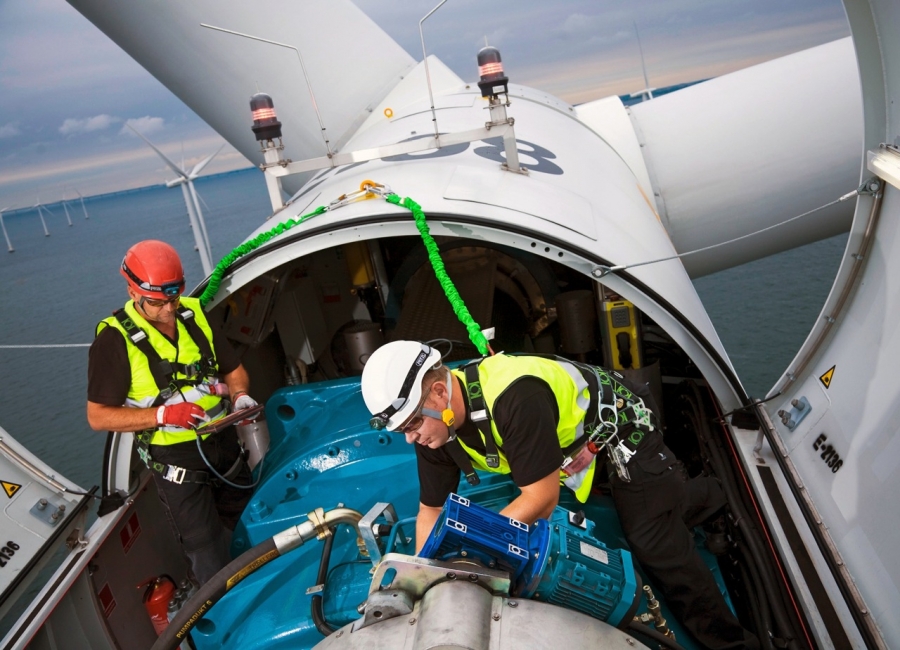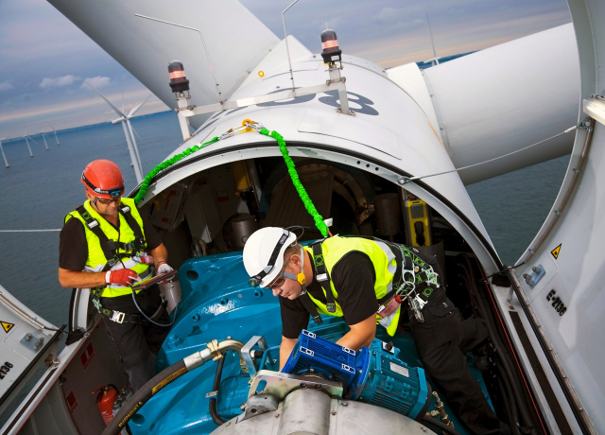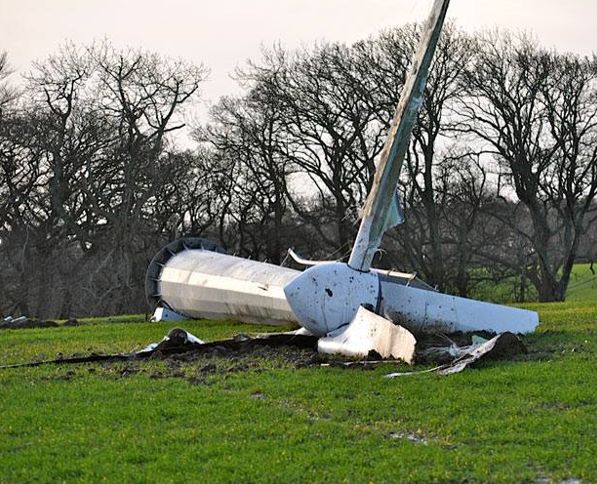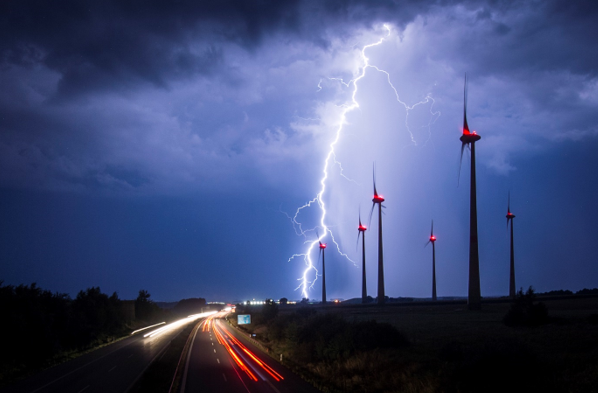
Protection of Wind Turbines Against Sudden Overvoltage and Lightning
With the widespread use of wind turbines, the sustainability and safety of the systems come to the fore. Damage and stopping of turbines after they start working causes great economic losses. It is very difficult to access and intervene in installed systems later. For these reasons, Grounding and Lightning Protection of Wind Turbines is of great importance during the installation phase.

Wind Energy Sector is one of the fastest developing renewable energy sources in our country and in the world. In classical energy production systems, reducing carbon monoxide gas, which harms the environment, becomes mandatory with legal regulations. This situation increases the development of alternative energy sources. Wind Power Plants, which can be installed on land or at sea, will have a significant share in energy production percentages in the next 10 years.

As wind turbines become more widespread and competition increases, the sustainability and safety of the systems come to the fore due to the high installation costs. Damage and stopping of turbines after they start working causes great economic losses. Due to the harsh physical conditions, it is very difficult to access and intervene in the installed systems later. For these reasons, Grounding and Lightning Protection of Wind Turbines is of great importance during the installation phase. This important issue is also allocated in the relevant standards. If we list the relevant standards: IEC 62305 – Lightning Protection Standard, IEC 61400/Wind Turbines Generator Systems/Chapter 24 Lightning Protection.

In order to protect a system or facility against lightning and overvoltage, the integration of grounding system, equipotential system, internal lightning and external lightning systems is very important. All these systems must be completely designed and integrated into the system.
Grounding should be designed to maintain its effectiveness for as many years as possible in wind turbine applications. The risk of corrosion has a great impact on the increase of grounding resistance over time. For this reason, the galvanized strips to be used in foundation grounding must be stainless steel and their thickness must comply with the DIN EN 50164-2 standard. In addition, the use of corrosion tape at every connection point is of great importance for facility continuity. Foundation grounding planning should be made as a result of calculations within the scope of specific resistance obtained as a result of the facility ground survey and the system should be strengthened with chemicals that have freezing properties. The strength of the grounding system is directly linked to the effectiveness of internal lightning systems that will ensure electronic system security and the effectiveness of external lightning systems that will ensure physical security.
Equipotential system must be ensured between turbines and around the turbine. Thus, sudden pulse transitions and jumps will be prevented. The sprouts to be removed from the foundation grounding and all metal parts with possible protection and function grounding should be re-equalized with a common equipotential busbar. We also have to install local equipotential bars within the facility and on the turbine. Otherwise, as a result of coupling effects, sudden overvoltages will be directed to the turbine and the earth will not be able to perform its damping function quickly. In order to ensure equipotentiality and to dampen impacts where they occur, connection equipment with Spark Gap surge arresters, called class D, must be used for connection and grounding points.
Internal lightning systems are vital for the continuity of wind turbines. All AC and DC power lines, coaxial lines, data lines must be protected with low voltage surge arrester systems. CLASS B/C/D protectors against lightning and mains strikes should be gradually integrated into the system. Otherwise, impacts occurring in nanoseconds could damage all electronic equipment and the entire investment would face a major economic blow. Sudden overvoltages cannot be detected by fuses and relays. Since they are very fast pulses, they can only be detected by surge arrester systems. Even if a lightning strike hits any turbine within the facility, all other power plants may be affected by this strike. The facility is at risk within a 2km radius and if there is no surge arrester system, the system may malfunction.
images
A billboard struck by lightning
CLASS B or B+C class surge arrester systems should be used in AC and DC power lines at a suitable continuous voltage against lightning. Three-phase energy surge arresters with a protection capacity of 150 kiloamperes at 400 Volt continuous voltage are designed for Wind Power Plants and can absorb lightning strikes within themselves thanks to spark gap technologies. In addition, appropriate surge arresters can be found on all data, coaxial and communication lines, depending on the type of system. When lightning directs itself towards the turbine, it can cause damage in many ways with its speed, heat and energy power. Physical damage poses a danger to the entire facility. Turbines, especially those that collapse as a result of fire, appear over time. For this reason, thin catch points should be designed in turbine systems and these ends should be lowered to the ground area insulated from inside the turbine with an insulated lightning down conductor. Receiving a directed pulse with an insulated lightning down conductor will protect the facility's electronic equipment due to the magnetic field and eliminate the risk of fire. Otherwise, undesirable results will occur.
Licon Lightning Landing Conductor
As a result, damage to Wind Power Plants built as a result of investments worth millions of liras against lightning and overvoltages is an undesirable situation for investors and contractor companies. However, this inevitable natural phenomenon occurs 8 million times every day all over the world, creates a voltage of 1 billion volts and can reach a temperature of 28000 celsius with a power of 200 kiloamperes. For this reason, lightning protection and grounding systems designed by standards and expert engineers are of great importance in our investments.